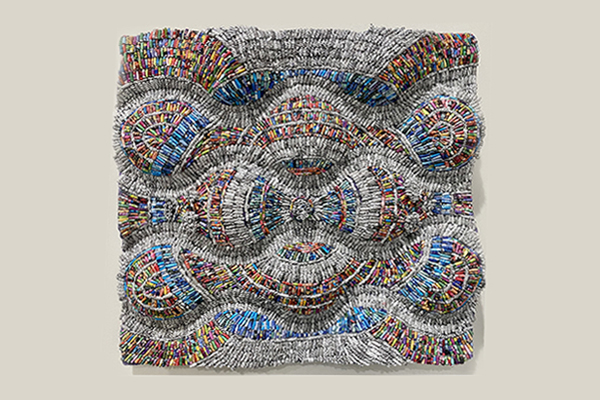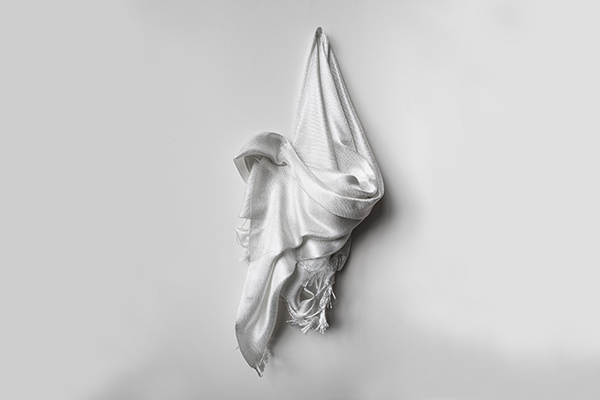About Exhibitions
-
 Jan
Jan
2026Red Horizon: Art. Heritage. New Energy
Read moreCelebrate Lunar New Year with Art! A vibrant Lunar New Year group exhibition celebrating Asian art, culture, and renewal. Highlighting the dynamic spirit of the Asian diaspora, this showcase features 15 visionary Asian American and Asian diaspora artists—each living and working in New York—whose practices bridge ancestral tradition with contemporary expression. Together, their works echo the courage, vitality, and forward momentum of the Year of the Red Horse.
Spanning painting, installation, and mixed media, Red Horizon creates a compelling dialogue between heritage and imagination. The featured artists explore themes of memory, identity, migration, and belonging—each offering a distinct voice to a shared visual narrative shaped by resilience and creative evolution.
The title Red Horizon evokes dawn, transition, and infinite possibility—a symbolic crossing into a new year, guided by inherited wisdom and contemporary energy. Visitors are invited to explore how cultural memory and artistic innovation come together to shape new horizons of connection, community, and hope.
Special programs include a traditional Korean Tea Ceremony led by artist Sei Ryun Chun and the family-friendly Happy Neigh Year! Horse Painting Workshop with Stephanie S. Lee—Flushing Town Hall teaching artist and curator of this exhibition—drawing inspiration from the joyful imagery of Korean folk art. The exhibition concludes with a closing reception featuring an artist talk and a live musical instrument demonstration by multidisciplinary artist Eugenie Chao, offering insight into her unique blend of visual art, sound, and cultural storytelling.
Running through March 1, 2026, Red Horizon: Art. Heritage. New Energy is more than an exhibition—it is a gathering of Asian culture, community, and creative renewal in the heart of Queens.
-
 Apr
Apr
2026Knot NOW
by Michal ShapiroRead moreMichal Shapiro has been painting and drawing for most of her life, nurtured by early exposure to art in her mother’s studio. A Queens College alumna (BFA, MFA coursework), she studied under esteemed artists Herbert Aach and Gerald Hahn, whose mentorship helped shape her transition from figurative to abstract painting. Immersed in SoHo’s vibrant art scene of the late 1970s, she maintained a studio on Broadway and Prince, exhibited at Cooper Union Gallery, and formed lasting connections with painters such as Thornton Willis.
Knot NOW will feature a retrospective of images of Carrick Bend knots that I have been creating for the past 6 years. It will feature works on paper and canvas; knots large and small, neutral and bright.
WHY KNOT?
“The Carrick bend, also known as the Sailor's breastplate, is a knot used for joining two lines. It is particularly appropriate for very heavy rope or cable that is too large and stiff to be easily formed into other common bends. It will not jam even after carrying a significant load or being soaked with water.” - Wikipedia
Even its description is weighty; the Carrick bend is the strongest knot in the sailor’s toolkit. I find this image to be timeless and full of potential symbolism. Yes, it is a knot. But it is also an image that reflects strength, symmetry, and balance. It relies on strong opposing forces to create that stability. It is the coming together of equal objects to wield a different, larger power. That power rests upon the deceptively simple arrangement of “over and under.” And to extract from the above quote, “It is the joining of two lines.” Within the realm of abstraction with its emphasis on the stripped back elements of visual art, it is not simply a knot, is it? Perhaps it is also a way to look at relationships; the compromises or “bends” that are required of both people involved to strengthen the emotional bond. I started working with this image about 5 years ago, and I still enjoy its power, and its ability to retain that power no matter what medium I use to portray it.
-
 May
May
2026BUSYWORK
by Jaynie CrimminsRead moreJaynie Gillman Crimmins is a New York City–based artist who transforms everyday materials into intricate, meditative constructions that reveal alternative narratives of consumption, memory, and care. Her work has been exhibited widely at venues including ART on PAPER NYC; the Sharjah Museum of Art during the Islamic Arts Festival (UAE); SPRING/BREAK Art Show; the Muscarelle Museum of Art at the College of William and Mary (VA); Hunterdon Art Museum (NJ); Zuckerman Museum of Art (GA); and the Steinberg Museum of Art at LIU/Post (NY).
In Busywork, Crimmins reclaims the notion of “busywork” as a profound act of endurance and self-preservation. Through repetitive, labor-intensive gestures—shredding, sorting, rolling, and assembling—Crimmins transforms discarded materials into meditative constructions that assert presence amid chaos.
Often dismissed as meaningless or trivial, busywork becomes, in her hands, a means of grounding the body and mind during times of crisis, grief, and uncertainty. Each small, persistent motion reflects resilience, offering a quiet counterpoint to the political and emotional turbulence of our era.
Crimmins invites viewers to consider how acts of repetition can become acts of resistance—how the smallest gestures, accumulated over time, embody both survival and hope.
-
 June
June
2026Power Play: Sculpture and Photography
by Donnelly MarksRead moreDonnelly Marks is a New York City–based sculptor and photographer whose work explores the flow of consciousness through transience, imperfection, and material transformation. Guided by intuition and chance, Marks creates new visual narratives from found materials—crushed cardboard, concrete, and metal—allowing spontaneous connections to shape the creative process.
Marks earned a BFA in Sculpture and Fine Art Photography from Carnegie Mellon University and has lectured on photography at the Savannah College of Art and Design. Their work has been exhibited at the Annmarie Sculpture Garden & Arts Center (a Smithsonian Affiliate, MD); Westbeth Gallery; Prince Street Gallery; Queens College Art Center; Jamaica Arts Center; Montana Modern Fine Art; and Brooklyn Waterfront Artists Coalition, among others.
This exhibition celebrates the power of play — not as escape, but as liberation. The selected sculptures emerge from consistent, daily practice. Using materials at hand, these ephemeral constructions of plastic, cardboard, metal, and paint resist pretension, perfection, and preciousness. Each piece bears the imprint of the hand. Textures are rough-hewn, the scale intimate, the feeling expansive — even sacred. Through photography and altered perceptions of scale, the sculptures are transfigured: the small becomes monumental, abstraction crystallizes into metaphor, warrior-like figures arise, and casual constructions transform into symbols of power, survival, and strength.
-
 Sept
Sept
2026LIC Morphology
by Paul FabozziRead morePaul Fabozzi’s paintings and works on paper have been exhibited widely in solo and group shows across New York, Philadelphia, San Francisco, Rome, Busan, and beyond. His work is held in numerous private and public collections, including the Weatherspoon Art Museum, San Diego Museum of Art, Neuberger Museum of Art, Frost Museum of Art, Samuel Dorsky Museum of Art, and the New York Public Library.
Fabozzi is the recipient of a New York Foundation for the Arts Fellowship and support from the Café Royal Cultural Foundation. He is also the editor of Artists, Critics, Context: Readings in and around American Art since 1945 (Prentice-Hall), an anthology of writings on contemporary art.
He currently serves as Professor of Fine Arts and Chair of the Department of Art and Design at St. John’s University in Queens, New York, and as Creative Director of Moves: Movimenti Creativi, a visiting artist residency program based in Lucera, Italy.
Fabozzi earned his MFA from the University of Pennsylvania’s Weitzman School of Design in 1993 and his BFA from Alfred University’s School of Art and Design in 1988. His formative studies also included programs in Cortona, Italy, with the University of Georgia at Athens in 1989, and in Siena, Italy, with SUNY Buffalo in 1987.
In LIC Morphology, Paul Fabozzi presents a series of interrelated paintings inspired by his wanderings beneath the elevated train lines of Long Island City, Queens. Using the dynamic intersections of structure, light, and movement as his foundation, Fabozzi transforms this ever-changing urban landscape into a meditation on rhythm, space, and time.
Over the past fifteen years, Fabozzi has observed and documented the dramatic transformation of the Queensboro Plaza area through an ongoing archive of photographs. His paintings reimagine these impressions through layered mark-making and shifting tonalities that evoke both the industrial past and the architectural energy of the present. In LIC Morphology, the city becomes both subject and metaphor—a living structure in constant motion.
What our visitors saying about their experience
-
Your philosophy is wonderful, we need more people to think as you do. I think the Garage Art Center is an important project and much needed in the neighborhood.
Anonymous, Bayside -
I agree it's wonderful to be able to support other artists. At the Garage Art Center, we could have a talk for the community about the joy of not only collecting art but giving it as a special gift. Not about commercialism, but about how it can affect your life.
Anonymous, Jackson Heights -
I'm thrilled to be part of what you are doing. I have for years, wished for a local community for artists.
Anonymous, Bayside -
This is what I always dreamed about. I used to think about the artists, writers, and musicians would gather and discuss, share, and collaborate. Thank you so much for making this happen with your special vision!
Anonymous



